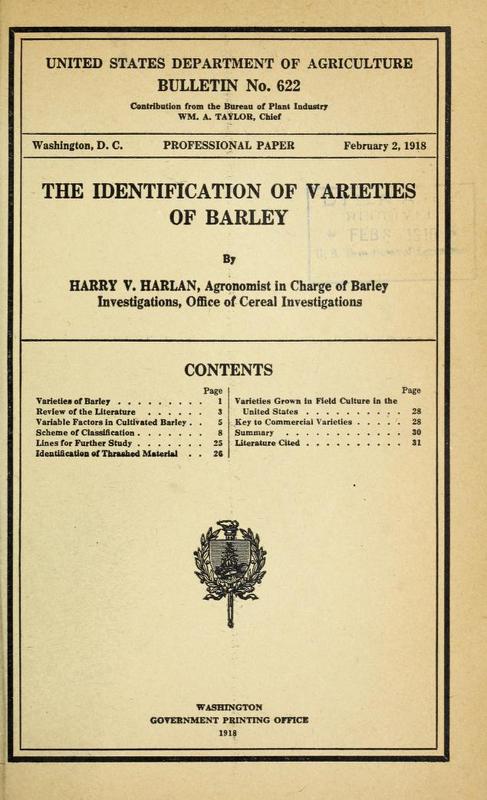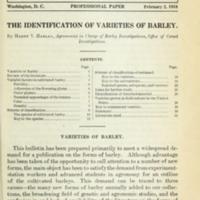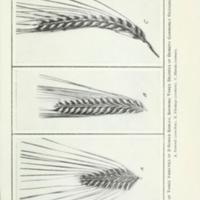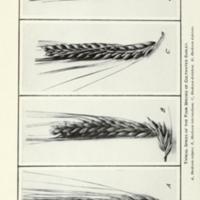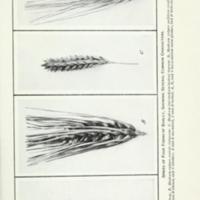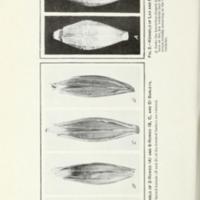The Identification of Varieties of Barley
Creator
Date
1918
Excerpt
This bulletin has been prepared primarily to meet a widespread demand for a publication on the forms of barley. Although advantage has been taken of the opportunity to call attention to a number of new forms, the main object has been to satisfy the demand from experiment-station workers and advanced students in agronomy for an outline of the cultivated barleys. This demand can be traced to three causes — the many new forms of barley annually added to our collections, the broadening field of genetic and agronomic studies, and the confusion in and lack of availability of the literature on the forms of barley.
The increase in the number of barley varieties has been rapid. Not only have many new sorts been produced by the various agricultural experiment stations, but there has been a large number of importations. These importations have been of many types and of themselves have done much to stimulate interest in barley. At the same time a demand for more detailed information on all our crops has developed. Plant problems, especially studies in variations and inheritance, are being persistently attacked. When this new interest was directed toward barley, it immediately became apparent that this crop, because of the unusual clearness of the varietal distinctions, was exceptionally well suited both to student instruction and to genetic studies. This clearness comes in part from the very broad limits of the group.
The variable characters are numerous and the separations sharp. Few cultivated crops present such contrasts as hulled and naked kernels, awned and hooded lemmas, fertile and infertile lateral florets, etc. The number of factors, coupled with the fact that all forms are perfectly fertile when crossed with each other, has resulted in a large number of easily distinguished varieties. The relative ease of subdividing the species makes the crop a profitable one to the student, and the definiteness of its varieties makes it equally useful to the plant breeder.
The increase in the number of barley varieties has been rapid. Not only have many new sorts been produced by the various agricultural experiment stations, but there has been a large number of importations. These importations have been of many types and of themselves have done much to stimulate interest in barley. At the same time a demand for more detailed information on all our crops has developed. Plant problems, especially studies in variations and inheritance, are being persistently attacked. When this new interest was directed toward barley, it immediately became apparent that this crop, because of the unusual clearness of the varietal distinctions, was exceptionally well suited both to student instruction and to genetic studies. This clearness comes in part from the very broad limits of the group.
The variable characters are numerous and the separations sharp. Few cultivated crops present such contrasts as hulled and naked kernels, awned and hooded lemmas, fertile and infertile lateral florets, etc. The number of factors, coupled with the fact that all forms are perfectly fertile when crossed with each other, has resulted in a large number of easily distinguished varieties. The relative ease of subdividing the species makes the crop a profitable one to the student, and the definiteness of its varieties makes it equally useful to the plant breeder.
Title
The Identification of Varieties of Barley
File(s)
The identification of varieties of barley cover.jpg
(image/jpeg)
The identification of varieties of barley TOC.jpg
(image/jpeg)
 An official website of the United States government.
An official website of the United States government.


